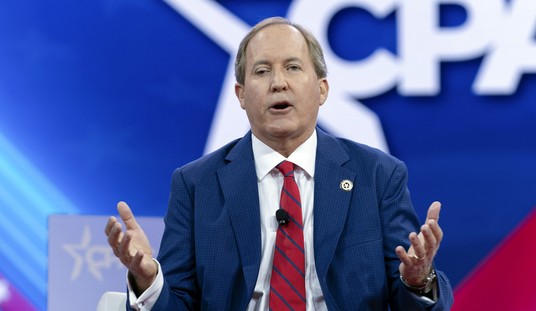A warning that the Fed will take action — as in, another ride on the quantitative-easing route? Or rather an acknowledgment that the Fed has done all it can do? Ben Bernanke’s testimony will get dissected by economic talmudists for the rest of the week, but the underlying message is that the economy is not getting any better, and it’s likely to slow down even further:
Federal Reserve Chairman Ben S. Bernanke expressed concern Thursday morning that recent weakness in the jobs market may continue without faster economic growth, but he held back from signaling that the Fed would act to stimulate economic activity in the near term.
During his opening testimony before the Senate-House Joint Economic Committee, Bernanke said that while the economy had enjoyed robust jobs gains in the early part of the year, the dramatic slowdown in hiring over the past two months may indicate “that more-rapid gains in economic activity will be required to achieve significant further improvement in labor market conditions.”
In follow-up questioning by lawmakers, Bernanke said he had not yet decided whether the economy had worsened enough to justify additional action, signaling that the Fed could yet conclude in coming days that it must do more.
“The key question we’ll be facing is: Will economic growth be sufficient to achieve continue progress in the labor market?” Bernanke said. “My colleagues and I are still working on our own assessments.”
Bernanke left open the possibility that the Fed might try another round of quantitative easing to boost the economy, but two factors probably would discourage that absent a dramatic decline in economic activity this year. First, with an election approaching, the Fed won’t want to look as though they are staging a political intervention rather than an economic intervention. The Fed already has enough animosity on Capitol Hill without exacerbating it further.
The other factor is that the QEs haven’t really produced much in the way of growth. The Fed doesn’t have much to work with anyway, since money is so loose at the moment that there is nowhere to go but tighter on monetary policy. Even with the QEs, the rate of economic growth and job creation are far below what we normally see in recoveries. Bernanke called the rate of job expansion this winter “robust,” but that’s patently ridiculous. Jobs grew at a pace of about 217,000 per month, which is barely what we’d see in post-expansion maintenance months, let alone in pre-expansion mode. That average rate certainly beats what we’ve seen since, but that’s damning with faint praise.
As John Merline at IBD explains, that’s especially true when compared to other recoveries after deep recessions:
The 1957-58, 1973-74 and 1981-82 recessions were the sharpest post-war slumps until the Great Recession. From those lows, the economy rose 15%, 18.5% and 19.6% over the next 11 quarters, respectively, vs. just 6.8% for the Obama recovery.
The president and his economic advisers also initially expected a solid recovery this time around.
Obama’s first budget in February 2009, forecast “rapid growth” that “is expected to push down the unemployment rate … to 5% by the end of 2013.” That month, Obama told the public that the $830 billion stimulus plan would “ignite spending by businesses and consumers” and “usher in a new wave of innovation, activity and construction.”
The administration’s August 2009 budget update claimed that “once the recovery takes hold, it is expected to gain momentum as time passes.”
And as the true depth of the recession became clear over the next several months, the White House continued to promise a solid recovery.
Merline remembers the promises of the first “Recovery Summer”:
Obama’s next budget in February 2010 predicted 3.8% real GDP growth in 2011 and 4.3% in 2012. The White House Council of Economic Advisers that year touted the “rapid turnaround in growth” in 2009 as “remarkable” and “impressive.”
In April 2010, Vice President Biden promised that “some time in the next couple of months, we’re going to be creating between 250,000 jobs a month and 500,000 jobs a month.” (Monthly job gains have averaged just 133,000 since Biden said that.)
The problem isn’t Fed policy, and the problem won’t get solved by Bernanke. The problem is that Barack Obama’s economic and regulatory policies have interfered with the normal recovery process. Those policies introduced massive new costs and ambiguities into the investor environment, including ambiguities about costs. Instead of championing cheap energy and streamlining of regulation — the approach that has led to all of our other robust recoveries — Obama went the opposite direction, using the economic situation to argue for his regulatory adventurism and innovations.
Bernanke has to deal with the mess at hand, including the reality that the Obama administration won’t change policy direction on the economy. That will almost certainly lead to lower growth and perhaps another recession, which means that Bernanke will probably try one more intervention just to limit the immediate damage, while doing long-term damage to savings and capital. That cycle will continue until voters put someone else in charge.
Does it matter much, though? Bernanke (jokingly) tells Sen. Jim DeMint that a trillion here, a trillion there … and pretty soon you’re talking about real money:
Bernanke says that the deficits are what matters, more so than the interest burdens they create, and he’s right — but it’s interesting to see what passes for real money these days.
Update: For some weird reason, I wrote qualitative easing when I meant quantitative. I’ve fixed it above, thanks to Pain Train, who pointed it out.








Join the conversation as a VIP Member